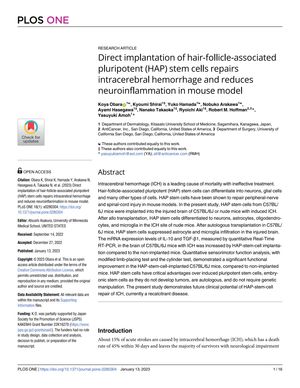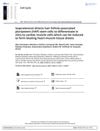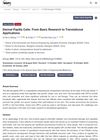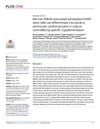Direct Implantation of Hair-Follicle-Associated Pluripotent Stem Cells Repairs Intracerebral Hemorrhage and Reduces Neuroinflammation in Mouse Model
January 2023
in “
PloS one
”

TLDR Implanting hair-follicle stem cells in mice brains helped repair brain bleeding and reduced brain inflammation.
The study investigated the therapeutic potential of hair-follicle-associated pluripotent (HAP) stem cells in treating intracerebral hemorrhage (ICH), a condition with high mortality and limited treatment options. HAP stem cells, which can differentiate into various cell types, were implanted into the brains of mice with induced ICH. Results showed that in nude mice, the transplanted HAP stem cells differentiated into neurons and other brain cells at the injury site. In C57BL/6J mice, the cells reduced neuroinflammation, as evidenced by decreased astrocyte and microglia infiltration and increased anti-inflammatory cytokines IL-10 and TGF-β1. Additionally, the implanted mice displayed significant functional recovery in sensorimotor tests compared to non-implanted mice. The study highlights the advantages of HAP stem cells, such as their non-tumorigenic nature, autologous source, and lack of need for genetic manipulation, suggesting their potential as a clinical treatment for ICH.



